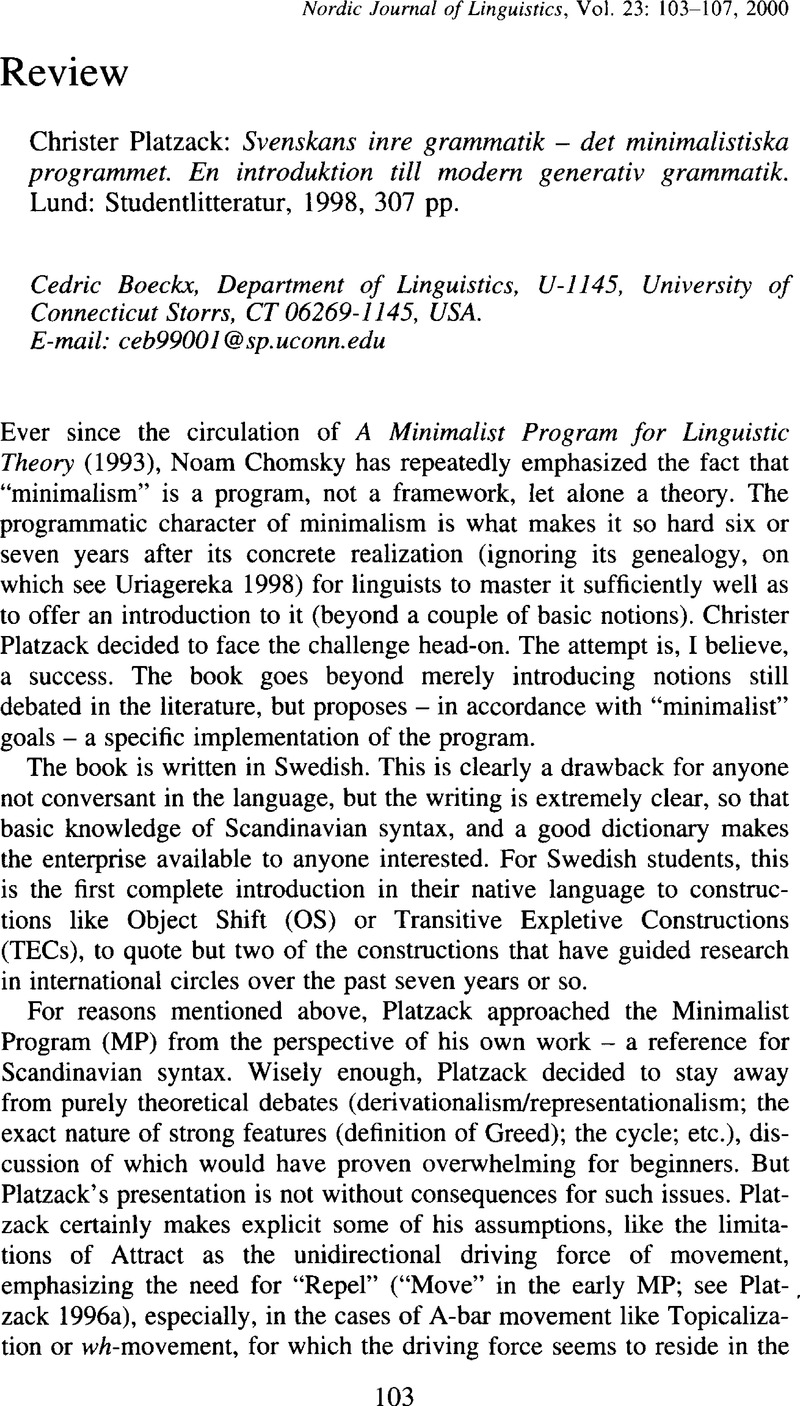Platzack, C. 1996a. Germanic Verb Second Languages. Attract vs. Repel: On Optionality, A-bar Movement, and the Symmetrical/Asymmetrical Verb Second Hypothesis. In
Lang, E. &
Zifonun, G. (eds),
Deutsch – typologisch.
Berlin:
de Gruyter,
92–
120.
CrossRefGoogle Scholar 